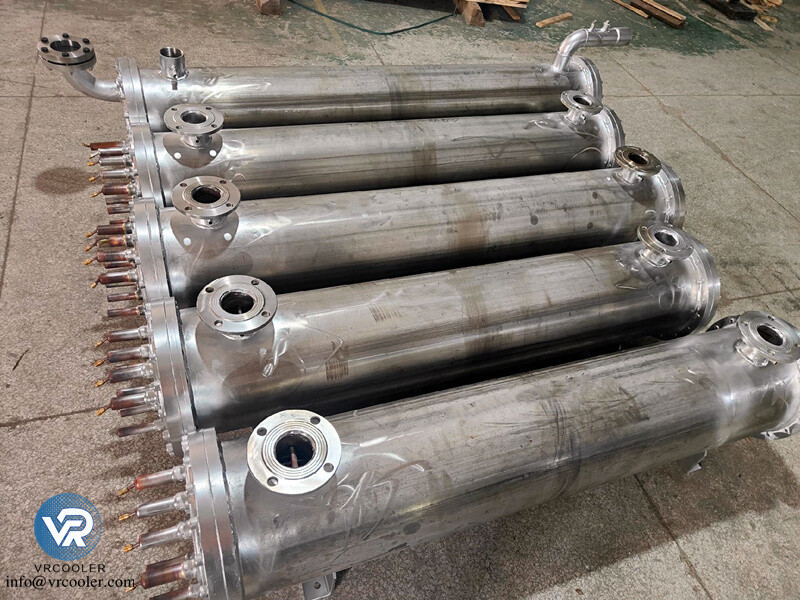Vacuum Condenser in Power Plant Steam Turbine
In a power plant, the Steam Turbine Vacuum Condenser is a critical thermal component that bridges the turbine’s energy output and the water-steam cycle’s efficiency. Its core function is to condense the low-pressure, low-temperature steam exiting the turbine into liquid water (condensate) while maintaining a deep vacuum. This process is indispensable for maximizing power generation efficiency, reducing energy waste, and ensuring the plant’s safe, continuous operation.
Core Role in the Power Plant Cycle
To understand the vacuum condenser’s importance, we first need to situate it in the power plant’s Rankine Cycle (the standard thermodynamic cycle for steam power plants):
Boiler: Water is heated to high-pressure, high-temperature steam (e.g., 150–200 bar, 500–600°C) using fuel (coal, gas, nuclear heat).
Turbine: High-pressure steam expands through turbine blades, transferring energy to the turbine (which drives a generator to produce electricity). As steam expands, its pressure and temperature drop drastically.
Vacuum Condenser: Steam exiting the turbine (now low-pressure, low-temperature—e.g., 0.03–0.05 bar absolute, 30–40°C) is condensed here into water. The condenser maintains a vacuum to enable this condensation and minimize the turbine’s outlet pressure.
Condensate Pump & Feedwater Heater: The condensed water (condensate) is pumped back to the boiler to restart the cycle, reducing water consumption.
Without the vacuum condenser, the turbine’s exhaust steam could not condense efficiently, breaking the water-steam cycle and crippling power output.

Why a Vacuum Is Mandatory
The vacuum in the condenser is not optional—it is a design requirement tailored to power plant needs:
Enable Condensation with Ambient Cooling: Power plants rely on low-cost, ambient cooling sources (e.g., river water, cooling tower water, typically 20–30°C). At atmospheric pressure (1 bar), water condenses at 100°C—far higher than ambient cooling can achieve. A vacuum (≈0.03 bar absolute) lowers the condensation temperature to 30–40°C, matching the cooling water’s temperature and enabling efficient heat transfer.
Maximize Turbine Efficiency: Turbine power output depends on the pressure difference between its inlet (high-pressure steam) and outlet (condenser vacuum). A deeper vacuum minimizes the turbine’s exhaust pressure, creating a larger pressure gradient. This allows the steam to expand more fully, transferring more energy to the turbine blades. For example, a 0.01 bar reduction in condenser pressure can boost a power plant’s thermal efficiency by ~0.5%.
Avoid Air Infiltration & Corrosion: A vacuum (lower pressure inside the condenser than outside) prevents atmospheric air from leaking in. Air is non-condensable and acts as an insulator, reducing heat transfer. Additionally, oxygen in air causes severe corrosion of turbine blades and condenser tubes—costly to repair and dangerous for operations.
Working Principle (Step-by-Step)
Steam Entry: Low-pressure, low-temperature steam exits the turbine and enters the condenser shell through the steam inlet nozzle.
Heat Transfer & Condensation: Steam flows around the tubing bundle. Inside the tubes, cool water (from cooling towers/rivers) circulates. Heat transfers from the steam to the cooling water: the steam loses heat, condenses into liquid water, and drips down to the hotwell.
Condensate Collection: The condensate accumulates in the hotwell, where it is pumped by the condensate extraction pump to feedwater heaters (and eventually back to the boiler).
Vacuum Maintenance: Any NCGs (air, CO₂) that accumulate in the condenser (due to minor leaks or chemical reactions) are removed by air ejectors or vacuum pumps. This prevents NCGs from raising the condenser pressure and breaking the vacuum.
Cooling Water Circulation: Warmed cooling water (after absorbing heat from steam) exits the condenser and is sent to a cooling tower (to release heat into the atmosphere) or discharged (if using river water). The cooled water is then recirculated back to the condenser.

